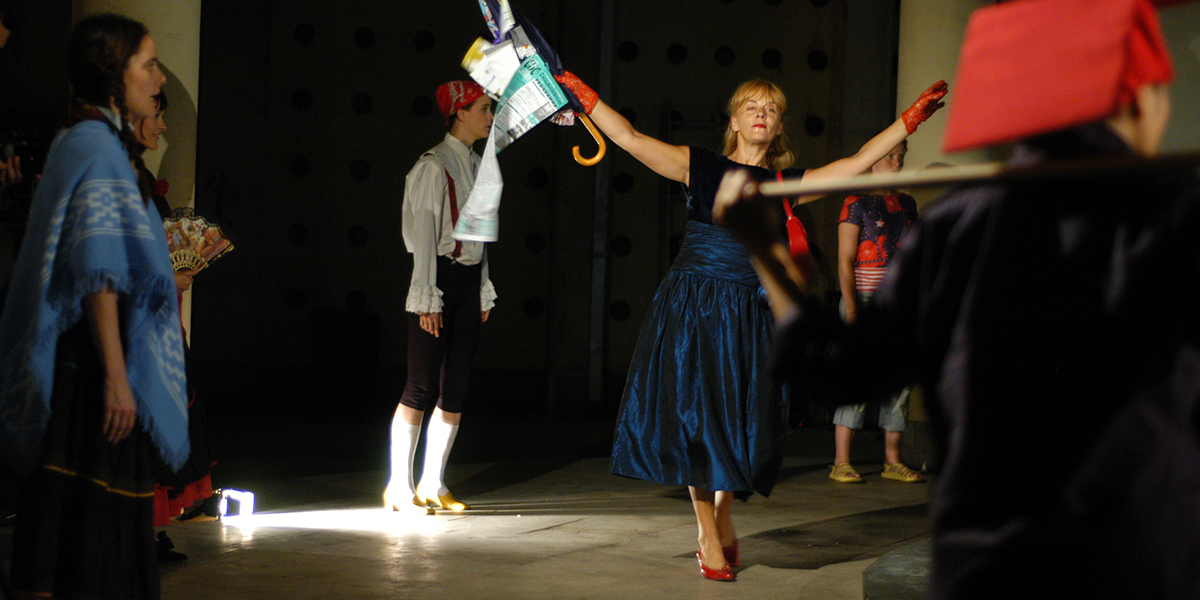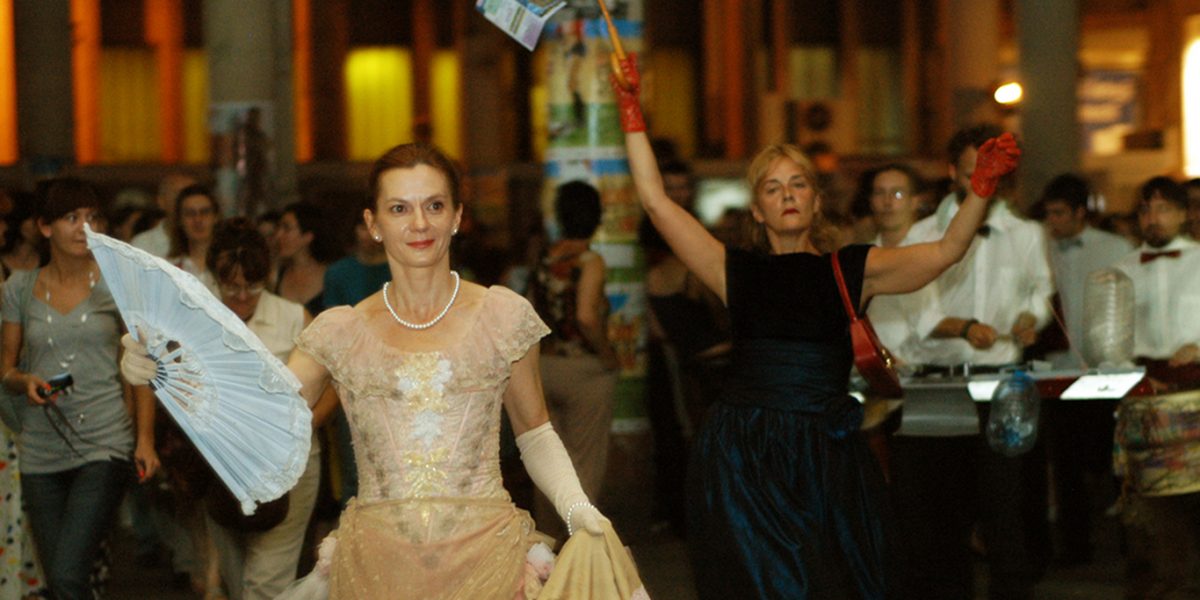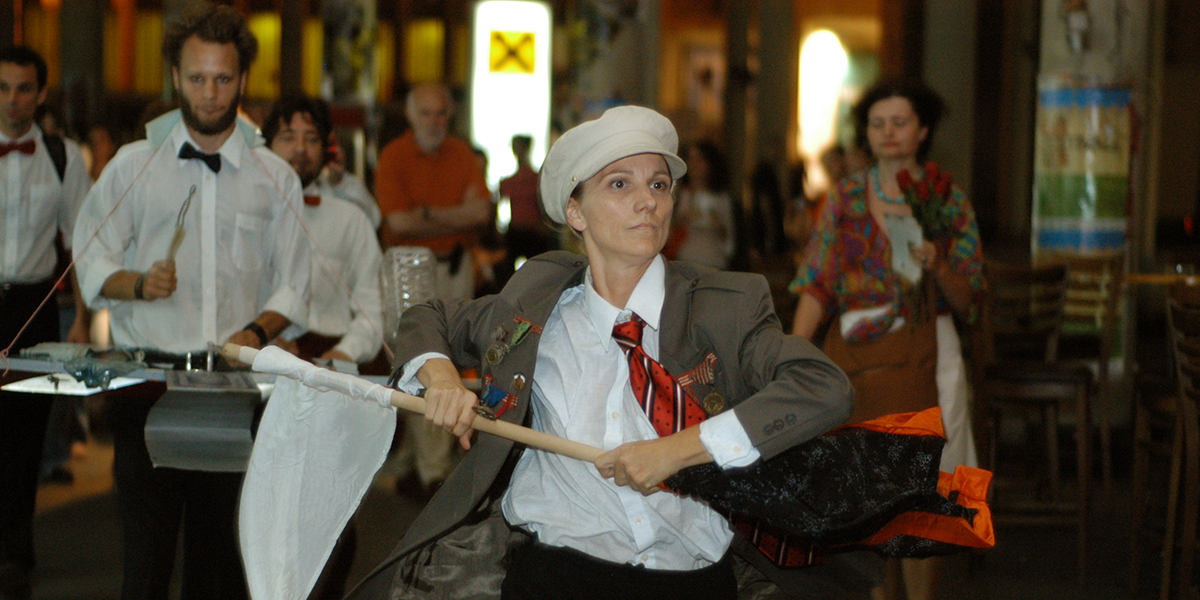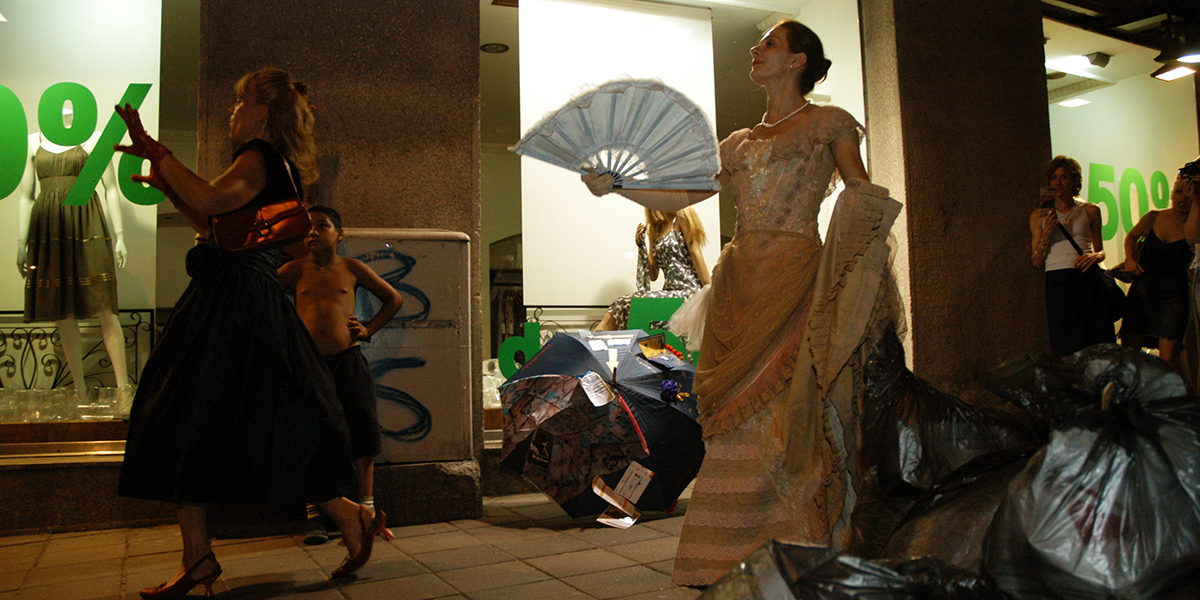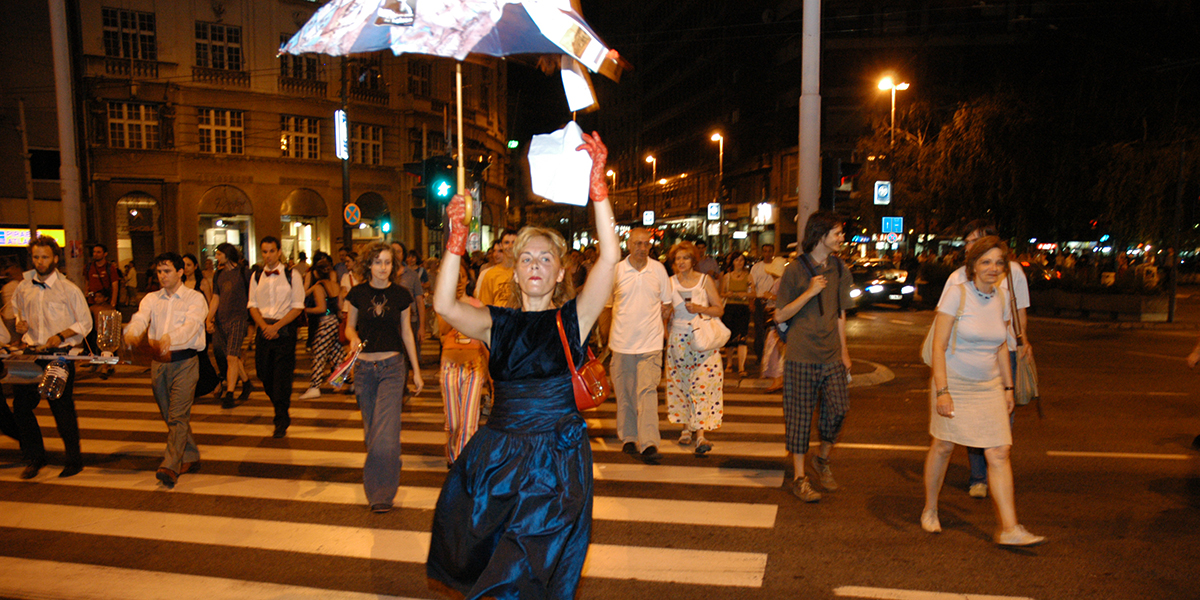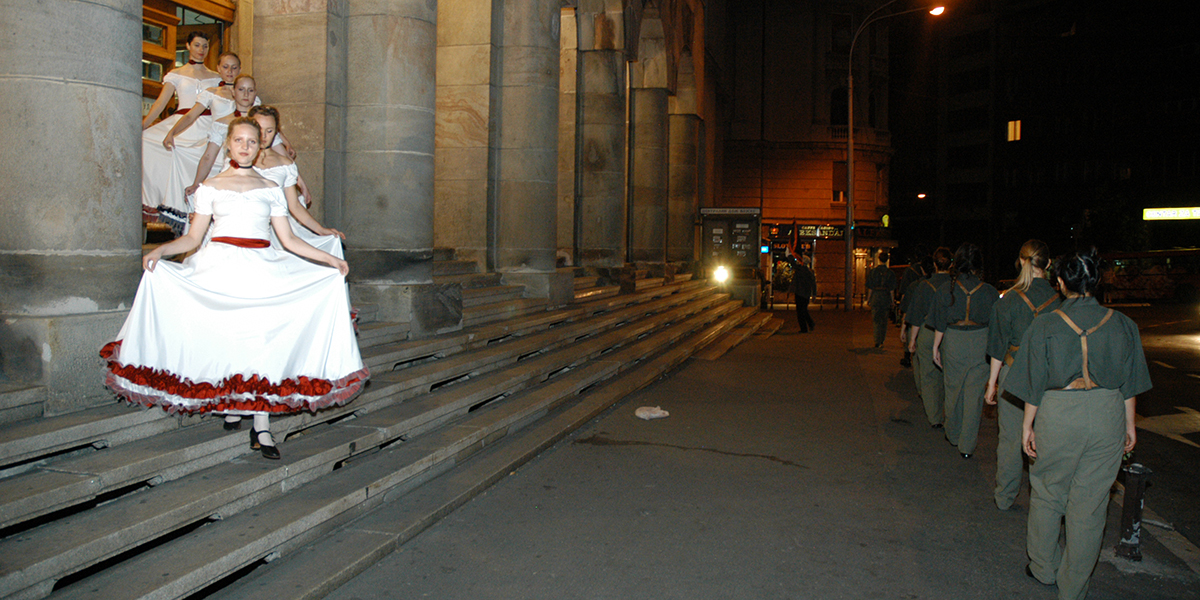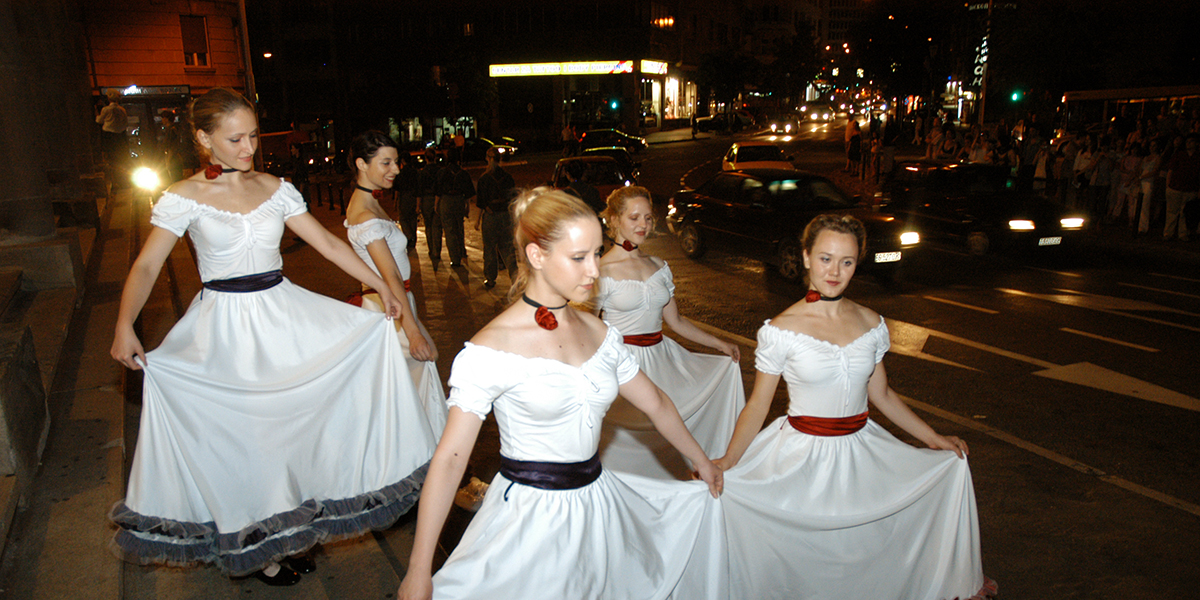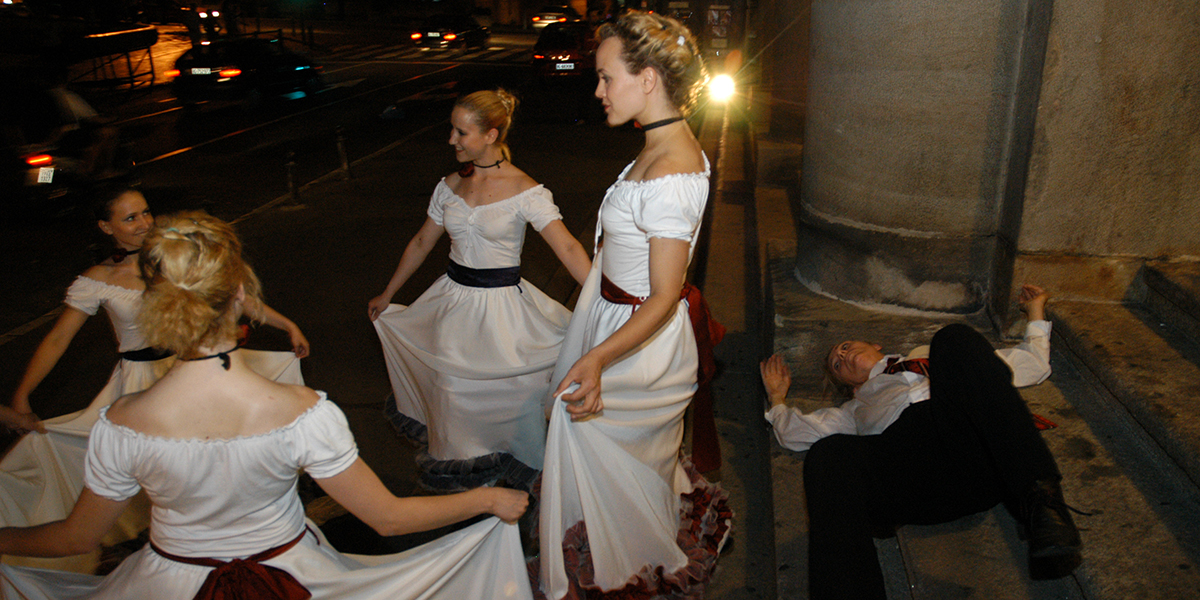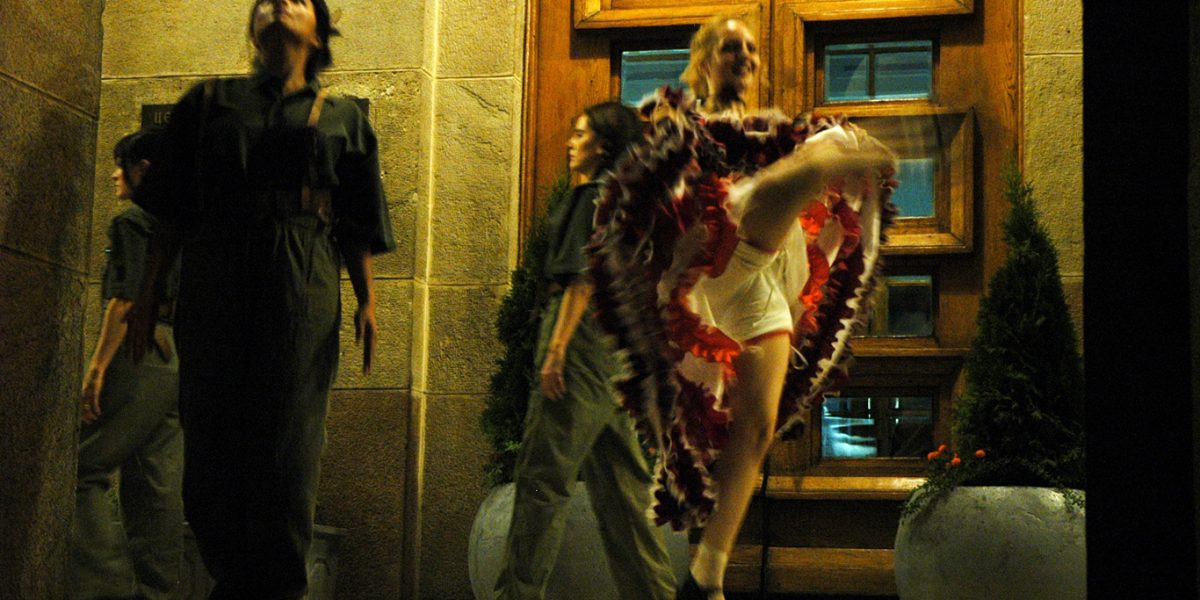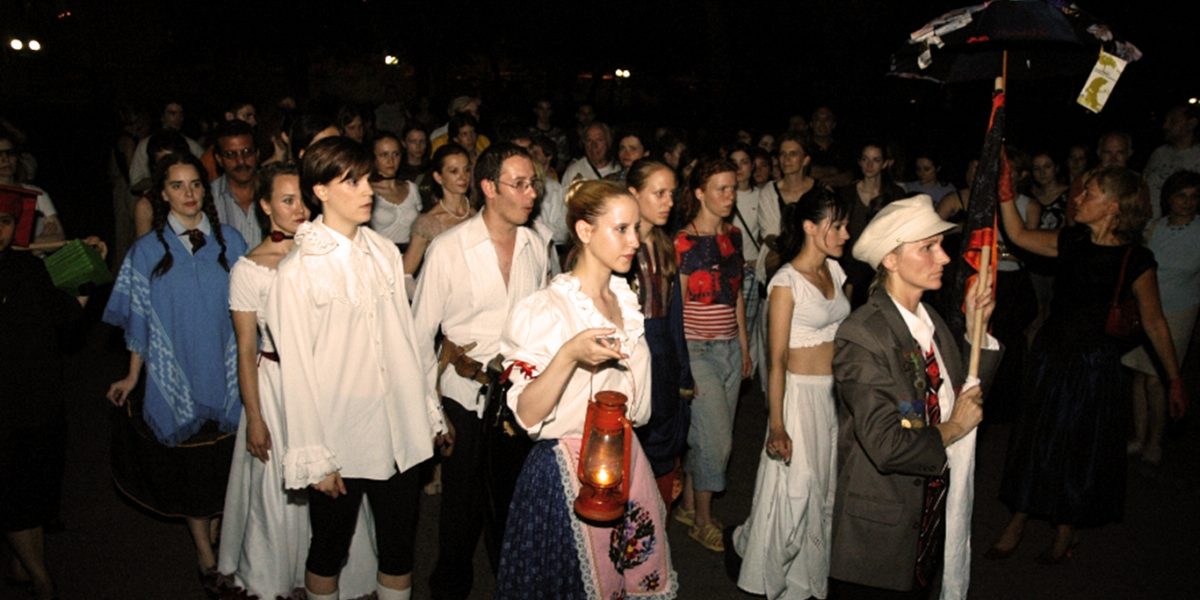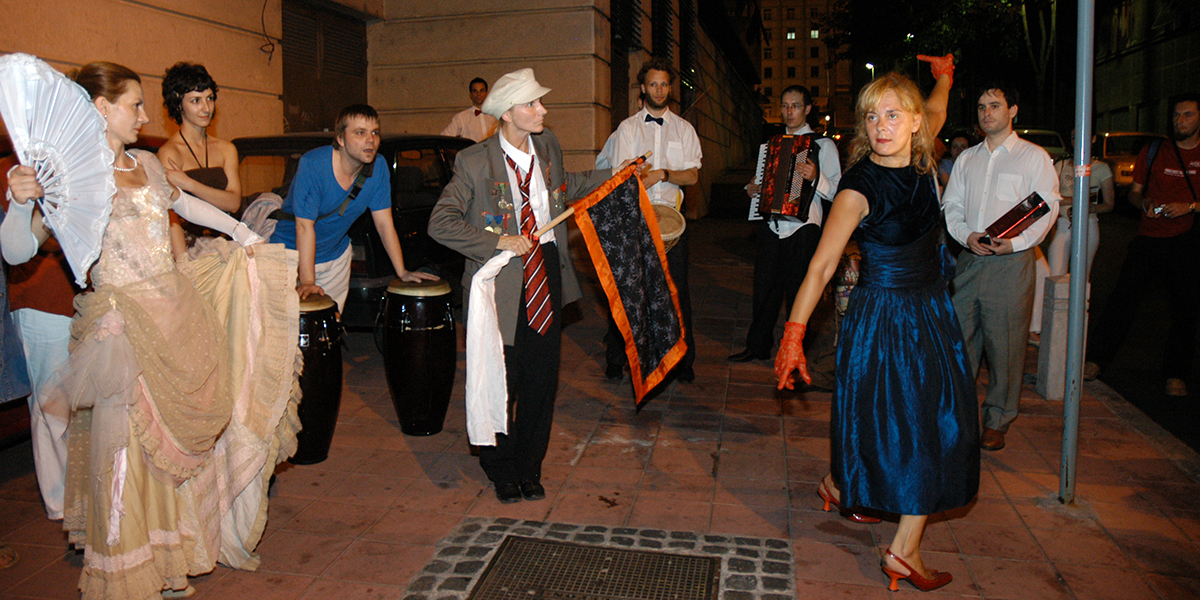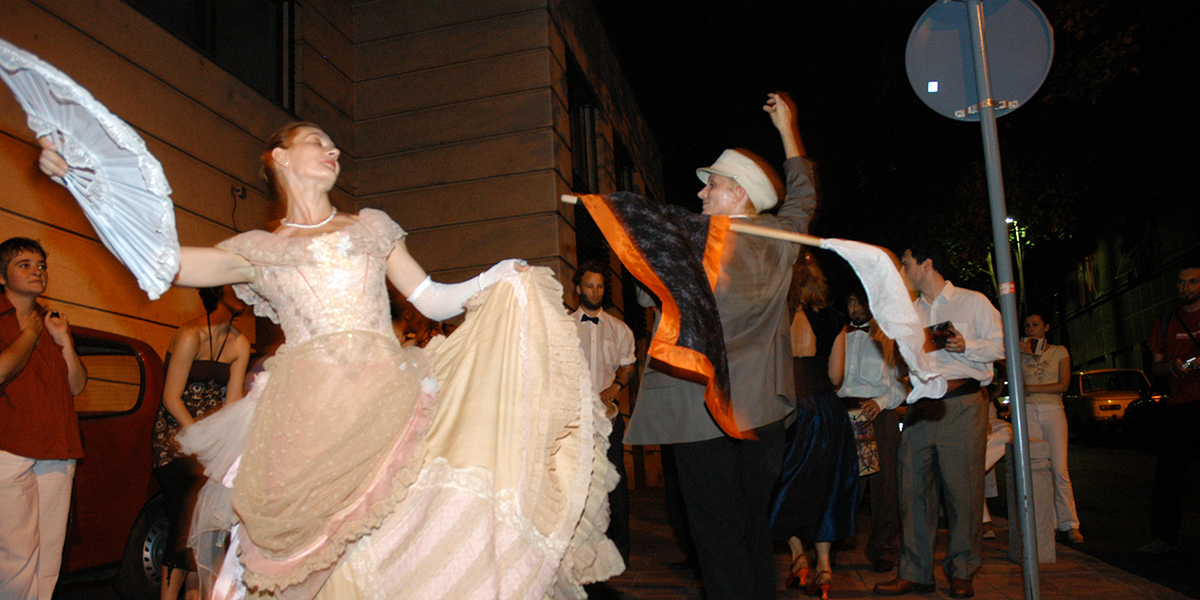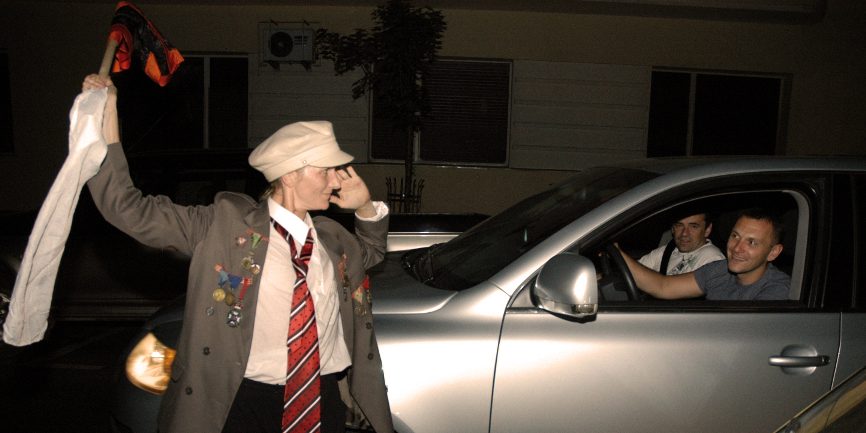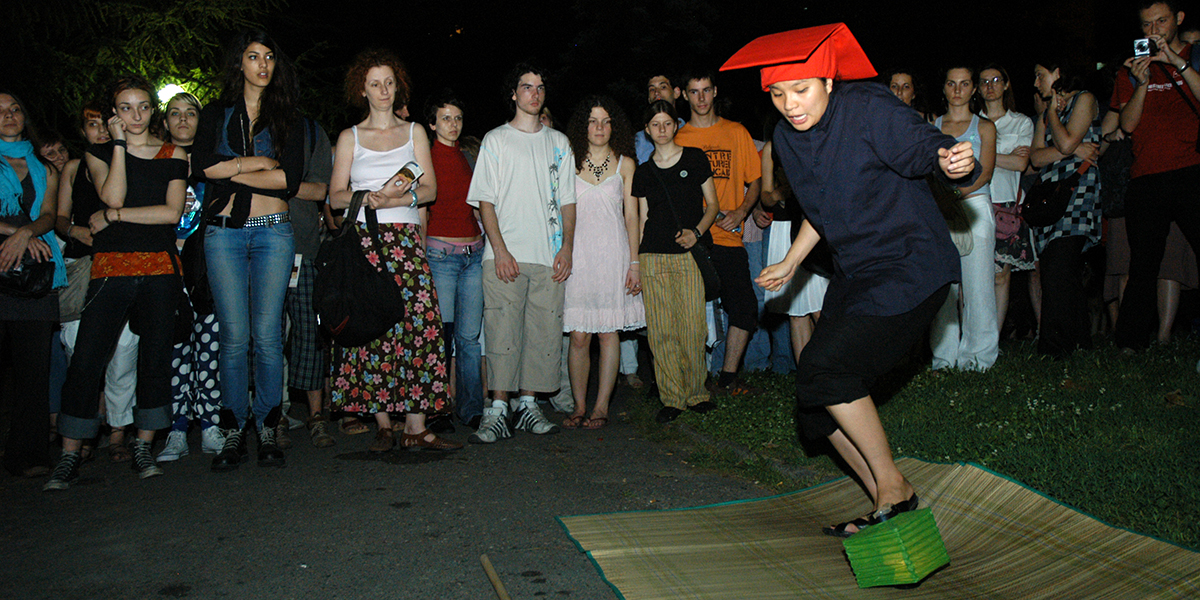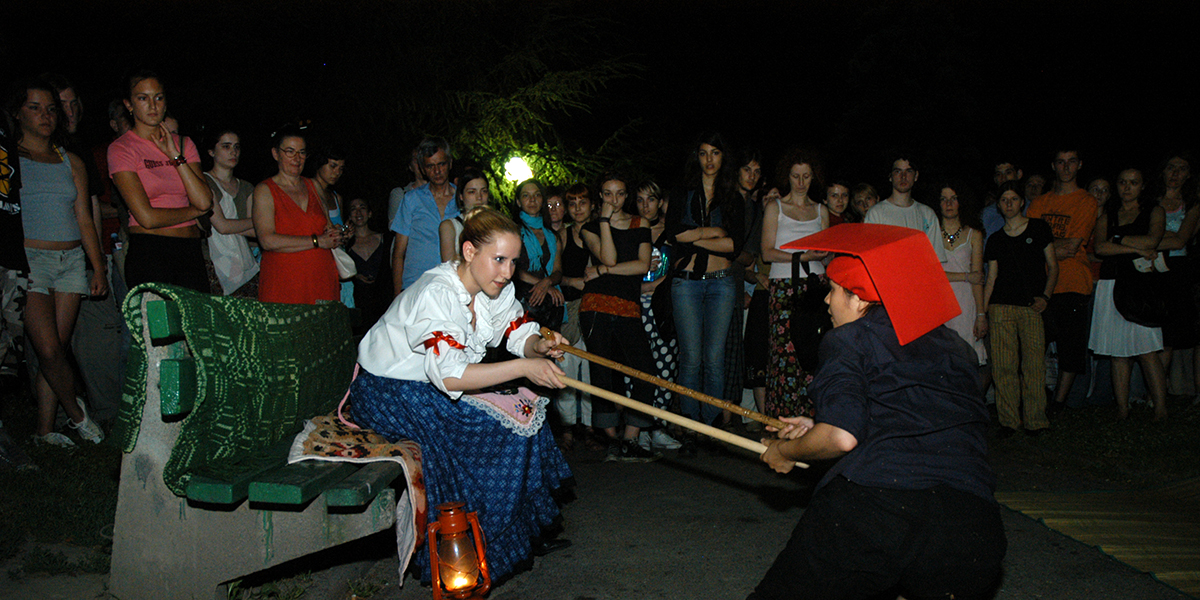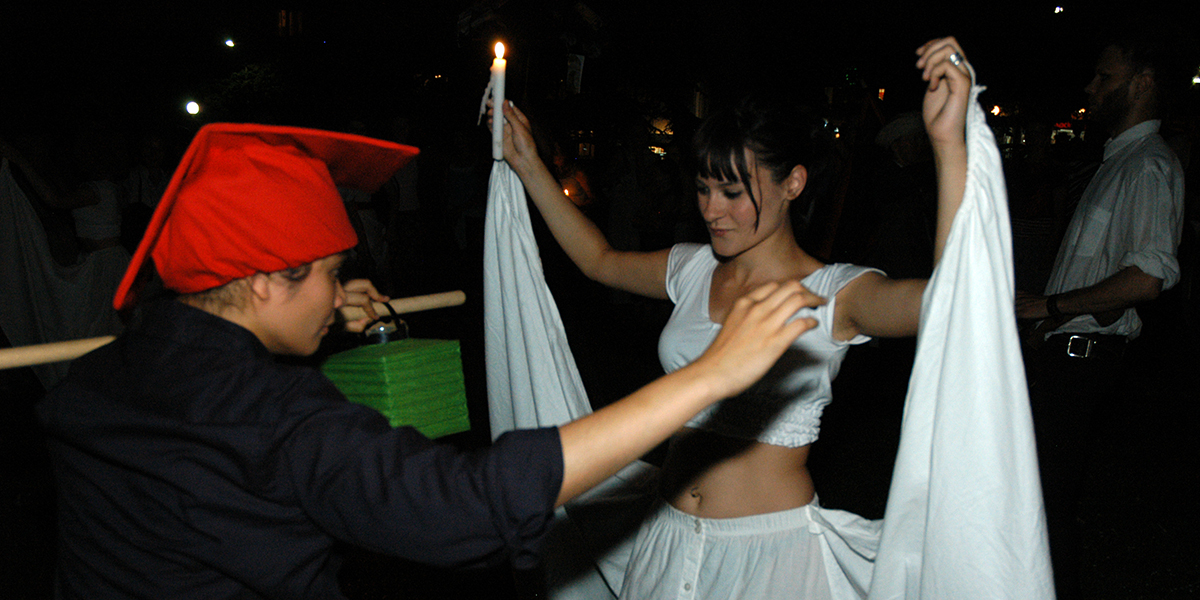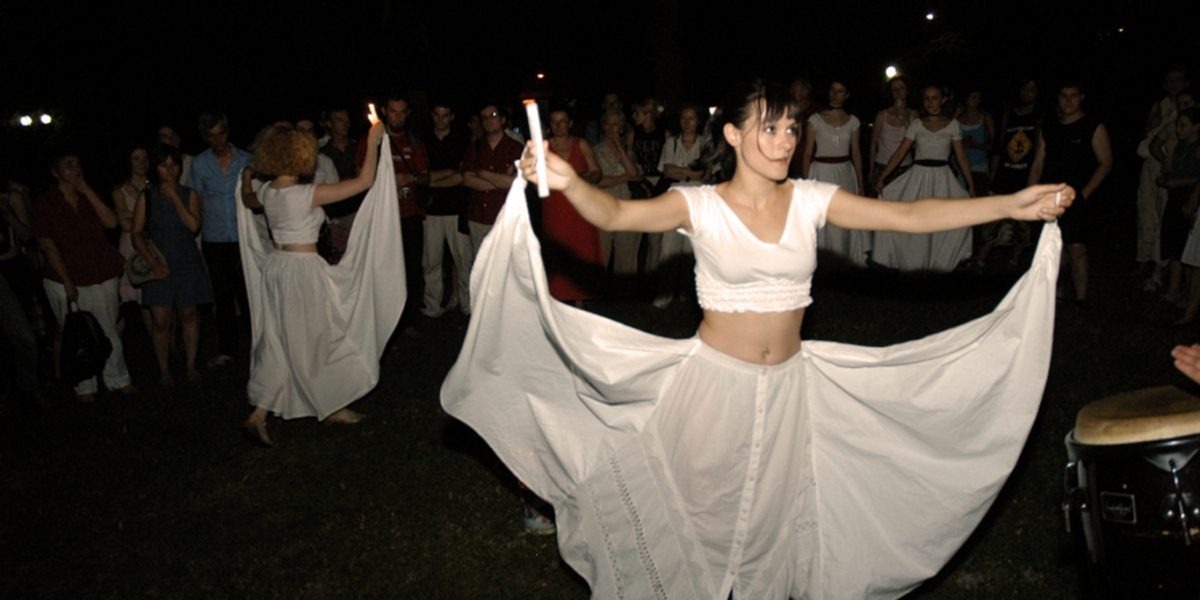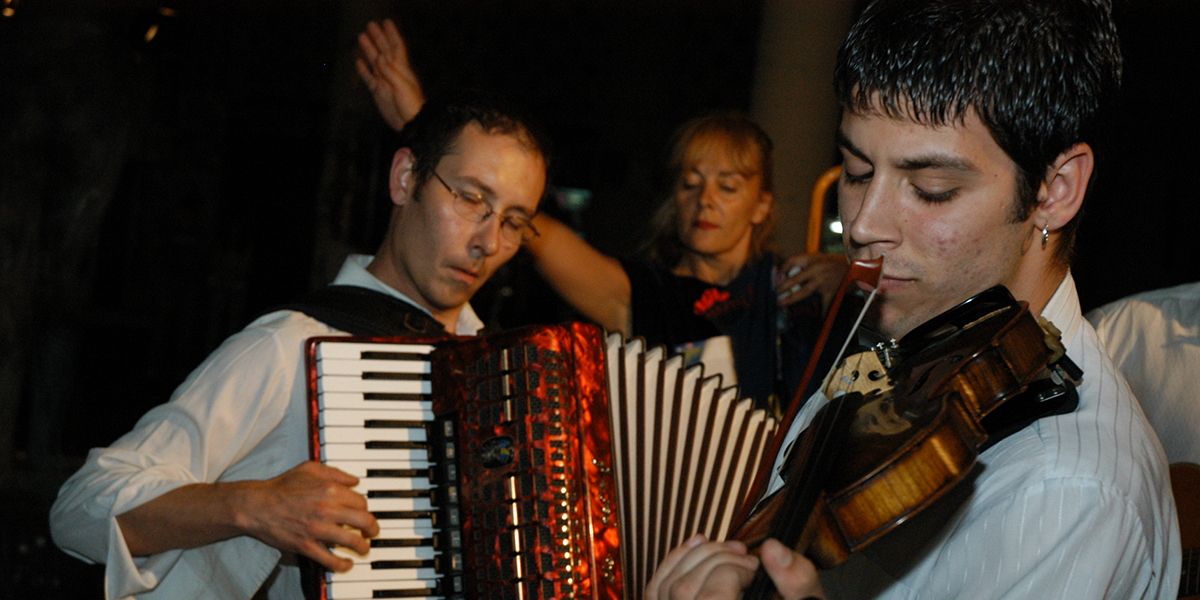GUIDE THROUGH AN ALTERNATIVE HISTORY OF BELGRADE
As part of its ‘Fifth International School for Actors and Directors’, DAH Theater presented the performance Guide through an Alternative History of Belgrade. The performance took place in a few locations: from the city centre in Bezistan; the park on Republic Square; in front of the Central Army Centre; in University Park near Studentski trg (Student Square); and on the Great Stairways of Kalemegdan Fortress. These points were chosen for unrolling the main scenes to give the performance the shape of a classic ‘tourist’ tour of Belgrade, where the actor-guides can lead their audience through town and give their interpretations of history. [2006]
The theme of the performance is the alternative history of Belgrade, one that is not always taught in schools, but nevertheless formed by the turbulent and complex events that marked our city in past centuries. That alternative history of Belgrade manifests itself in the frequent changing of the names of the streets of the capital city, which each generation of citizens of Belgrade went through at least once in their lifetime.
The first officially preserved name of a Belgrade street (then an alley) dates from 1848. Since then the streets have frequently changed names: in 1896, 1930, 1943, 1946, 1997, 2001… The case of the main street of our city is a good example of this process. The street was named King Milan in 1872, changed to Marshall Tito in 1946, renamed in 1997 to ‘All Serbian Rulers’, and finally its old name of King Milan was returned to it after the fall of Milošević’s regime. Considering that the change of names in a city reflects the change of politics, systems, ways of living and values, it speaks a lot about the history of our city, the history of our country and society. That history is hidden and many citizens of Belgrade are not even aware of these changes, and in this way they are also not aware of the history of our society that greatly influences their future. How many are aware that of the 2398 streets in Belgrade, only 127 are named after exceptional women?
Director: Dijana Milošević
Performers/DAH Theater:
Jugoslav Hadžić
Aleksandra Jelić
Sanja Krsmanović Tasić
Maja Mitić
Participants of the Fifth International DAH Theater School for Actors and Directors:
Olivier Bachmann, Linda Forsell, Ana Carina Garber, Barbara Keller, Dita Lang, Howard Scott Lotker, Ivana Milenović, Iva Musić, Hernan Petit, Beatriz Pizano, Macon Reed, Irene Rubio, Mei Ann Teo, Donka Torov, Mirjana Vuković
Other participants: Lidija Milić, Nevena Petrović, Mina Timotijević, Kim Warsén
Film: Neša Paripović
Film production and program design: Jovan Čekić
Program translation: Sanja Krsmanović Tasić
Organization: Elizabeta Kurela, Suzana Tasić Anović, Milena Ristić
Costumer Group: Kruna Domić, Smilja Ignjatović, Tijana Joksimović, Sanja Manakoski
Lights: Radomir Stamenković
The activities of the DAH Theater Research Center are supported by: Rockefeller Brothers Fund
Realization supported by: Secratariat for Culture- City of Belgrade, Ministry of Culture of the Republic of Serbia



